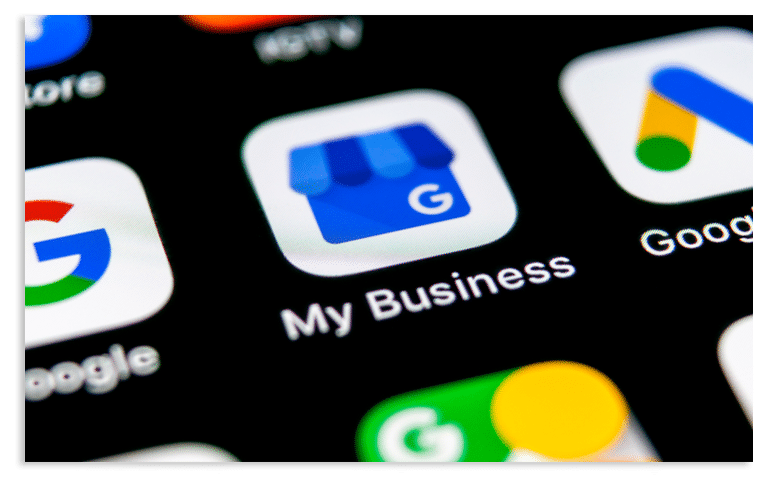How to Target Your Ideal Clients with Local Marketing
Local businesses can benefit from refining their marketing strategy so that it targets ideal clients within their communities. After all, social media engagement or website clicks from users states away probably won’t do you much good if you’re trying to convince someone to use your services.
Today, 46% of Google searches are aimed at finding a business close to the user. Of those searches, about 78% result in a purchase from or a visit to the business found online. When users are searching for a business like yours in your area, is your practice coming up in the search results?
Whether you’re new to marketing or just want to ramp up your local marketing efforts, our 5 tips can help you better target ideal clients in your community.
What we’ll cover…
- Why identifying your audience is the first step to success
- How to better your local SEO
- How local directory listings can attract new clients
- How geotargeting impacts local marketing
- Why your business needs social media pages
5 Ways to Target Your Ideal Clients with Local Marketing
1. Identify your audience
Before you can strategize your targeted marketing plan, you first have to identify what kind of clients you want to bring into your office.
You probably have a client or two that reflect the qualities you hope for when taking on new clients. For example, if you are a chiropractor that works in sports medicine for kids, you may have a couple of members of your local high school’s football team as patients. To get more patients like these, you need to craft a marketing strategy that speaks to them.
Consider which kinds of clients you would like to see more of in your office. Use a whiteboard or document to list the qualities of your most ideal clients. What age are they? What do they do for work? Which services do they purchase most often? What are they hoping to accomplish with your services?
Take note of any similarities between the lists. These qualities may help you create marketing materials and advertisements aimed at attracting clients with similar goals and interests.
In relation to the example above, a chiropractor may find that many of their patients are using chiropractic care to improve their sports performance and prevent injury. The next time that doctor goes to create a local advertisement, she or he can use this sentiment to appeal to these clients.
As a local business, your ideal clients will likely live in your community. However, you will need to decide exactly which areas that you want to market to. Are you only hoping to attract clients in your city? Or are you serving the whole county? This is especially relevant for practices that offer house calls or emergency services.
Deciding which location to focus on will help you hone down on your marketing strategy even further.
2. Implement local SEO
Tailor your SEO, or search engine optimization, strategy to target clients in your ideal location. Seems like a simple enough concept, right? But how do you do it?
Whenever we talk about SEO, we have to talk about keywords.

If SEO was an allegorical hierarchy, keywords would be it’s crowned prince.
Keywords and phrases are… well… words and phrases… that better enable marketers to connect users with their content. Keywords signal to web users and Google’s algorithm that a particular page might be useful for the search query provided.
Let’s say you are an optometrist creating a page on your website for patients interested in contact lenses. When you are writing the copy for these pages, research which keywords and phrases your ideal client might be using to find this type of content.
To increase your likelihood of being found by local clients, include a mention of your location as a keyword. The optometrist in our example may want to use a phrase such as “contact lenses in Tulsa” or “Tulsa optometrist” somewhere in their page’s copy.
To learn more about how to brainstorm keywords, check out this blog.
3. Set up local directory listings
We want you to open Google and search for a local business in your area. You may type in something like “Italian restaurant near me” or “nail salon in Oakland”. Notice how many of the results are from Google itself or other local directory listing sites.
Your ideal clients are likely searching for your practice in the same way! When their results populate on their phone or computer, make sure your practice is one of them.
If you’re new to local directory sites, we strongly suggest you begin by creating a Google My Business listing. Not only do these listings tend to populate at the top of a SERP, but they also enable you to add photos of your business and receive reviews from your current clients.
 Create a Google My Business listing to increase your chances of appearing at the top of search engine results pages for local searches.
Create a Google My Business listing to increase your chances of appearing at the top of search engine results pages for local searches.
When deciding which other sites to use, think about which sites your ideal client is most likely to use. Yelp is usually a safe bet as many people consult this platform to find all kinds of businesses. Healthcare companies may also want to use sites like WebMD or a directory that only lists businesses in your industry.
Unsure of how your practice’s local directory listings appear online right now? Learn how you can scan the web for your listings using ListingPro.
4. Use local PPC
Geotargeting refers to a type of advertising that only markets to users within a specific location. This strategy is essential to any business that only services a particular area because it enables them to create a highly targeted advertising campaign.
This is important for two primary reasons.
First, as a local business, you will experience better results from your PPC efforts if those advertisements are only featured to users in your community. If you advertise to people outside of your area, some clicks will be wasted on users that won’t become clients at your practice, which will in turn cost you money.
Second, if your ad becomes successful and enjoys a healthy click-through rate, Google will give your ad a higher quality score. Google wants to see that your content is useful to users and a higher volume of interest will inform the search engine that it is.
When setting up a PPC campaign on Google Ads, be sure to limit the location to whichever areas you believe your ideal clients are residing. Google Ads, formerly known as Google Adwords, offers a variety of ways to set your preferred location, such as by specific city or by radius from your practice’s location. Likewise, Google Ads also enables you to exclude certain locations from your targeted PPC campaign.
In your advertisements, capitalize on your knowledge about your city by using language, terms, and imagery that appeal to your audience. And, of course, don’t forget about Prince Keywords!
5. Engage on social media
Last but not least, social media! Your practice’s social media profiles offer the perfect way for you to round out your local marketing plan.
We’re willing to bet that most of your clients have a social media profile, considering 77% of all Americans do. Many even have multiple different types of accounts. So, interact with them where they are already scrolling online by creating an effective social media profile for your local business.
Like directory listings, your practice’s profiles can also enable your social pages to populate on relevant SERPs. Plus, some platforms also allow users to leave reviews for businesses. This gives you an additional way to impress potential clients on the web.
For your industry, we highly suggest creating a Facebook profile. Not only does Facebook have specific types of pages for businesses, they also provide Facebook Insights, an analytics tool that enables you to track and analyze data about your page’s performance over time.
Be sure to include your practice’s address and other pertinent information on your page so that local clients can easily contact your office. Encourage users to “check in” on Facebook when they visit or tag your page in a post so that you expand your reach to other clients in your area.
 Happy clients can be a great marketing asset! Encourage them tag your practice, check in on Facebook, or leave reviews on your page.
Happy clients can be a great marketing asset! Encourage them tag your practice, check in on Facebook, or leave reviews on your page.
Facebook also features advertising capabilities that can be geo-targeted to reach your ideal demographic. When selecting your core target audience, limit the specifications to the demographic you identified in tip #1.
Why Targeted Marketing is Important for Small Business
Local marketing improves the chances that people that come across the web pages, social posts, and PPC ads you worked so hard to create will be interested in your practice. If you cast a net too wide and market to individuals outside of your service area, you will be wasting valuable time and money that could be spent on taking care of your clients.
30% of all mobile searches are to find local businesses, so make sure your pages and ads are optimized for mobile. Plus, 72% of people cite that they prefer mobile-responsive websites for ease of use.
Have more questions about using local SEO, targeted ads, or social media? Feel free to reach out to our team at 800.792.8384.
Looking for more resources? Check out these articles
The Importance of Local Business Listing Sites
Your Business’s Facebook Profile Checklist
3 Tips to be Found Locally on Google



